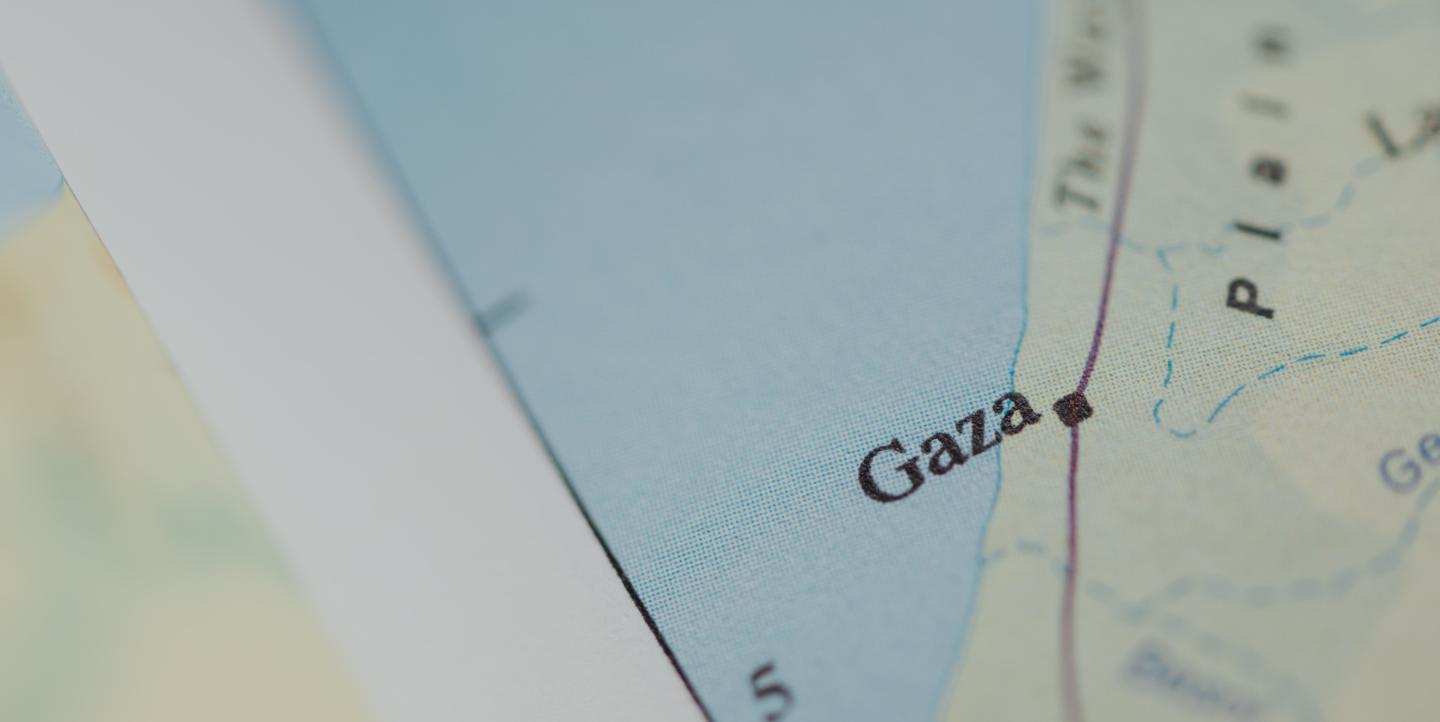This article was updated on Tuesday, January 9.
The world’s eyes have been on Israel and Gaza since the October 7 attacks by the Hamas militant group that are reported to have killed about 1,200 people in Israel, according to official Israeli estimates. It’s believed that Hamas is currently still holding over 100 hostages inside Gaza.
Israel has since launched a large-scale bombing campaign and subsequent ground invasion on Gaza, killing at least 22,835 people as of January 8, according to the Gaza Health Ministry, which is run by Hamas. The immediate conflict is far from resolved.
Tons of information is being shared online and emotions are high, understandably. Everyone seems to have an opinion, too, if your social media is anything like ours. Unfortunately, social media is less equipped than ever to handle all the content swirling around.
Where do we, as journalists, begin to accurately and ethically report on this conflict? Here are some tips and resources that can help:
(1) Report the facts – once you verify them
Provide your readers with facts and figures that you have vetted and verified. Make clear that these facts and figures will change, too. The status of many hostages taken by Hamas during its attacks on October 7 is still uncertain, as is the exact numbers killed by Israel’s military operation in Gaza.
For instance, the Hamas attacks are reported to have killed about 1,200 people. Hamas has taken hostage around 240 people, of which 85 have been released. Victims include children and the elderly.
Israeli strikes and its ground offensive in the days since the Hamas attacks in Gaza have reportedly killed over 22,835 people as of January 8, including more than 9,000 children.
On Thursday, October 12, Israel ordered that over 1 million Palestinians evacuate northern Gaza, and the Israeli military began its ground offensive on October 30. An estimated 1.9 million Palestinians, or 85% of Gaza's population, have been displaced since October 7, according to the U.N. The U.N. has warned of a humanitarian crisis in Gaza.
As you carry out your coverage, corroborate official sources, and attribute facts and figures.
These resources are being updated regularly with updates on the conflict:
- Maps: Tracking the Attacks in Israel and Gaza, from The New York Times
- How the Israel-Gaza conflict is unfolding in maps, graphics and videos, from The Washington Post
- Israel-Gaza war in maps and charts: Live Tracker, from Al Jazeera
On January 8, The Guardian published this analysis of the war's destruction to date.
(2) Beware of disinformation. Consume media with a critical eye.
Disinformation spreads during crises at alarming rates, especially on social media. Whatever your platform of choice may be – X, Facebook, Instagram, TikTok, WhatsApp, Telegram, the list goes on – you will come across false content.
In search of rays of positive news, people may post or repost information they wish to be true, but isn’t. Other more malicious actors will purposely seek to manipulate people online to advance certain aims of their own. Everyone has an opinion, whether well-informed or not.
Take care not to unwittingly amplify false claims. Be cognizant of the increased sophistication of fabricated multimedia. Manipulated images, falsified audio, deepfakes and more are all circulating.
When consuming media coverage, there are many factors to take into account. Consider, for instance, the outlet, writer, sources used in the reporting, and date of publication. When in doubt – or even if brimming with confidence – cross-reference the information you come across with other reliable sources. Consider what official sources, such as the U.N., are saying when it comes to the numbers killed, displaced, or otherwise affected by the conflict.
(3) Acknowledge the human toll and trauma
Journalists should report the rhetoric and actions of the major actors in this conflict – the Israeli government and Hamas – as well as the geopolitical stakes. However, focusing only on top-level actors risks over-simplifying the conflict and rationalizing or ignoring the deaths and trauma of Israeli and Palestinian civilians.
As journalists report topline numbers, they should take care not to reduce civilian casualties to only numbers. This can leave readers desensitized. Communicate the humanitarian cost of the war in your reporting by centering stories on civilians affected. Acknowledge that Israeli and Palestinian civilians alike have already suffered immense pain, grief and trauma.
In Israel, the majority of Israelis and foreign nationals killed and wounded during Hamas’ attack were civilians, according to the U.N. Office of the High Commissioner for Human Rights. In Gaza, civilians also account for the vast majority of those killed by Israeli airstrikes, including more than 9,000 children. An ongoing blockade of Gaza has led to dire humanitarian consequences, including a lack of food, clean water, and medicine, while only nine of Gaza's 36 hospitals are operational, according to the WHO.
Apply this approach to future developments, including the continued ground offensive in Gaza by the Israeli military.
(4) Learn the wider context to better follow the story
Take time to educate yourself on the wider context that surrounds the current situation. Identify the actors involved, and distinguish between political leaders and civilians. Read up on the geopolitics influencing developments.
Still, it’s a tall task to become an expert yourself as you cover the immediate conflict. As you conduct your reporting, interview experts to help provide context. Point readers to resources where they can learn more.
Consider the following questions in your reporting, and know that readers will be asking themselves many of the same questions:
- Who are Hamas and when and how did they come to power in Gaza? Why have the U.S., EU and other Western countries designated Hamas a terrorist group?
- Who is Benjamin Netanyahu, and how have his government's policies – described as the most right-wing in Israeli history – and Israeli settlements in the West Bank affected relations with Palestinians? What has been the international community's response to these policies?
- What is the history of Gaza? Why did Israel withdraw from Gaza in 2005, but not the West Bank? Why has Gaza been under a blockade since 2007, and what have the consequences been on Palestinians? What led Hamas and Israel to fight several wars prior to the current conflict, and why did ceasefires not last?
Zoom further back:
- When and why was Israel founded? What consequences did this have for Palestinians?
- What has the nature of relations been between Israel and the surrounding region since its creation?
- What were the Oslo Accords?
- Why has a final peace settlement stalled in the 30 years since the Oslo Accords?
There’s no shortage of questions you should be asking to guide your reporting. The history goes back thousands of years, complicated by war, religion and more.
Learning the history as well as the more immediate context will help you better understand future developments and anticipate where the conflict may go from here. Use what you learn to inform who you interview, what questions you ask, and how you frame your reporting.
(5) Reporting on war crimes
It’s important to understand what a war crime is, as well as terms such as “ethnic cleansing” and “genocide” when it comes to armed conflicts.
Know that not every civilian death in conflict is, according to international law, a war crime. That does not make civilian deaths any less tragic or important to cover, but classifying all civilian deaths as war crimes risks undercutting reporting on war crimes when they occur.
War crimes largely fall under the umbrella of violations of international humanitarian law or international criminal law. Violations of the former can include the intentional targeting of civilians and civilian infrastructure, the use of “indiscriminate” weapons, and more. Violations of the latter refer to crimes for which individuals can be held criminally responsible.
Learn to differentiate between genocide, ethnic cleansing, and crimes against humanity. Each has specific legal meaning, but they often are used outside their legal context on social media and in the news:
- Genocide refers to the intent to destroy, in part or in whole, an ethnic, religious, or national group.
- Ethnic cleansing is often confused with genocide, but is a separate concept. It refers to the intention to remove members of a certain national, religious, or ethnic group by threats and force from a given area.
- Crimes against humanity refer to serious, widespread human rights violations against a civilian population. They include, but are not limited to, widespread torture, murders, forced disappearances, enslavement, sexual violence, persecution, and the crime of apartheid.
Journalists can also consult the following resources:
- Reporter’s Guide to Investigating War Crimes, from the Global Investigative Journalism Network
- Guide for Journalists on How to Document International Crimes, from the Center for Law and Democracy
- Q&A: October 2023 Hostilities between Israel and Palestinian Armed Groups, from Human Rights Watch
(6) Prioritize safety and wellbeing
Reporting on the latest violence between Israel and Gaza has already proven dangerous for journalists on the ground. At least 79 journalists and media workers have been killed since October 7, according to the Committee to Protect Journalists. Three more are missing, 16 have been injured, and Israeli military and police have arrested 21 journalists.
Even if covering the conflict from a distance, the reporting can take a toll mentally. Speaking with people directly affected by the violence is difficult. Seeing images and video footage can be traumatic, too. Know that prioritizing your mental health is as important as keeping physically safe, and that journalists can experience trauma even when not directly reporting on the ground.
Here are some helpful physical safety resources:
- Safety kit, from the Committee to Protect Journalists
- Safety toolbox for freelance journalists, from the Rory Peck Trust
- Physical safety resources, from Reporters without Borders (RSF)
Here are some helpful mental health resources:
- Managing Emotional and Mental Health in the Field, from RSF
- Resources for Journalists Coping With Trauma, from the Dart Center
- Journalists and mental health: An API resource guide, from the American Press Institute
(7) Resources to support
All of this is overwhelming, and will continue to be. If you’re looking for concrete ways to support colleagues reporting on the frontlines of the conflict, here are some options:
- Emergency funding and crisis resources, from the Global Forum for Media Development (also available in Arabic: Emergency funding (AR) and crisis resources (AR))
- List of resources for emergency aid, from the International Women’s Media Foundation (IWMF). This includes links to the IWMF Emergency Fund, Journalists’ in Distress Network, Free Press Unlimited and more.
We’re learning, too. If we missed anything, let us know and we’ll update this article.
Photo by CHUTTERSNAP on Unsplash.


